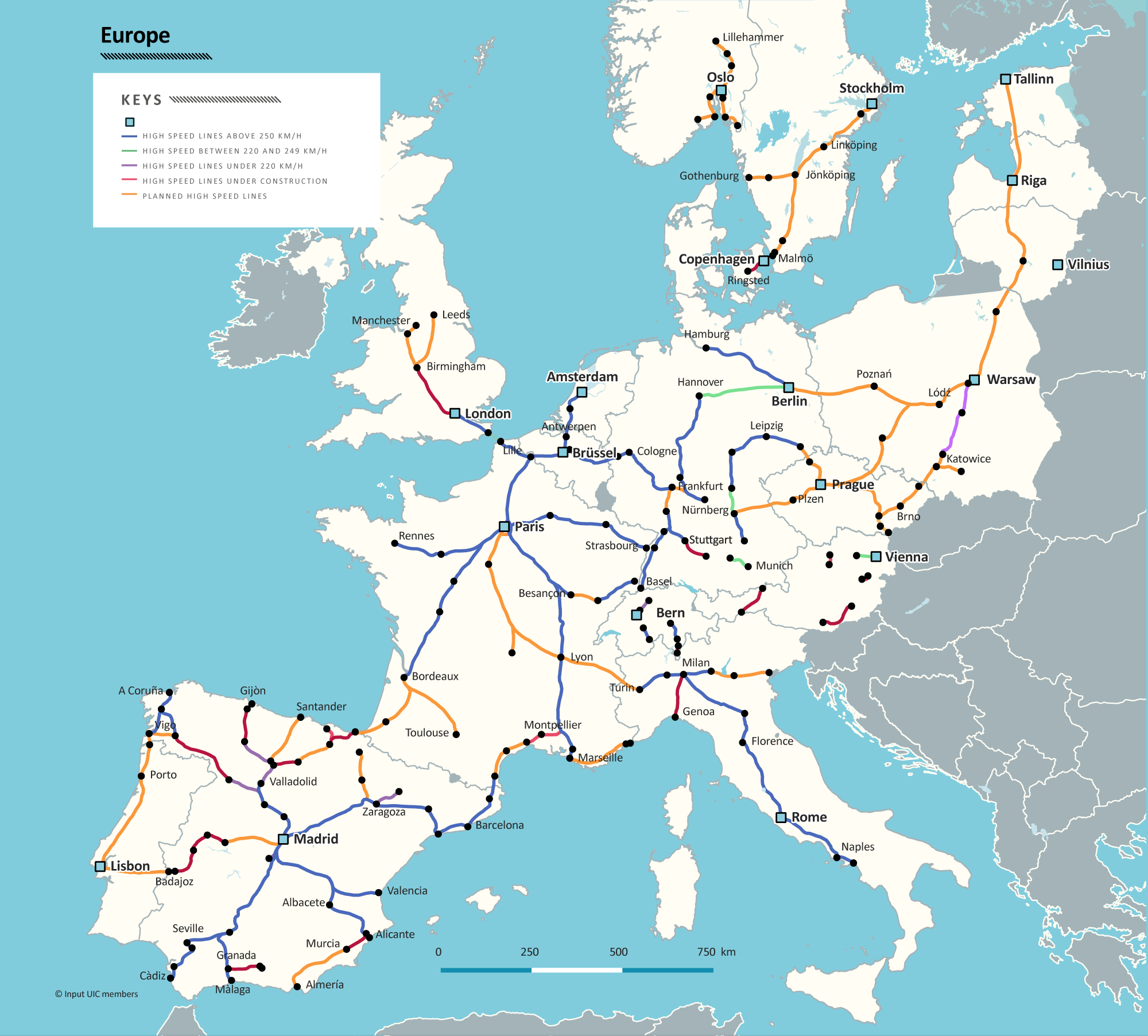BELGIUM

Built: 209 km (not including upgraded lines)
Lines in service:
→ Brussels – French border (L1): 72 km
→ Louvain - Ans (-Liège) (L2): 65 km
→ Liège – German border (L3): 36 km
→ Antwerp – Dutch border (L4): 36 km
The Belgian network of new lines has not officially changed a bit since December 2009. Three of the four Belgian high-speed lines lead to neighbouring countries (France since 1997, Germany and the Netherlands in 2009), while the thus-constituted network presents discontinuities with the country’s interior. Trains travel through Brussels, Antwerp and Liège on classic lines, like the route between Brussels and Antwerp or Louvain. But the arrival of high-speed has spurred on the Belgian rail network from top to bottom: new “TGV station” at Liège-Guillemins, the transformation of Antwerp’s central station and the underground passage in that city, upgraded lines Schaerbeek and Louvain and between Hal and Brussels, grade separations at Brussels-Midi and Schaerbeek, “diabolo” connecting Brussels airport to the principal rail lines of the national network, since 2012. Each and every one of them saving precious minutes for passengers.
The Thalys was the first high-speed train capable of crossing several European nations. Running at 300 km/h, it travels across four different rail networks and uses seven signalisation systems, in France, Belgium, Germany, and the Netherlands.
*Data likely to evolve.
**Source: International Union of Railways data, 2019


